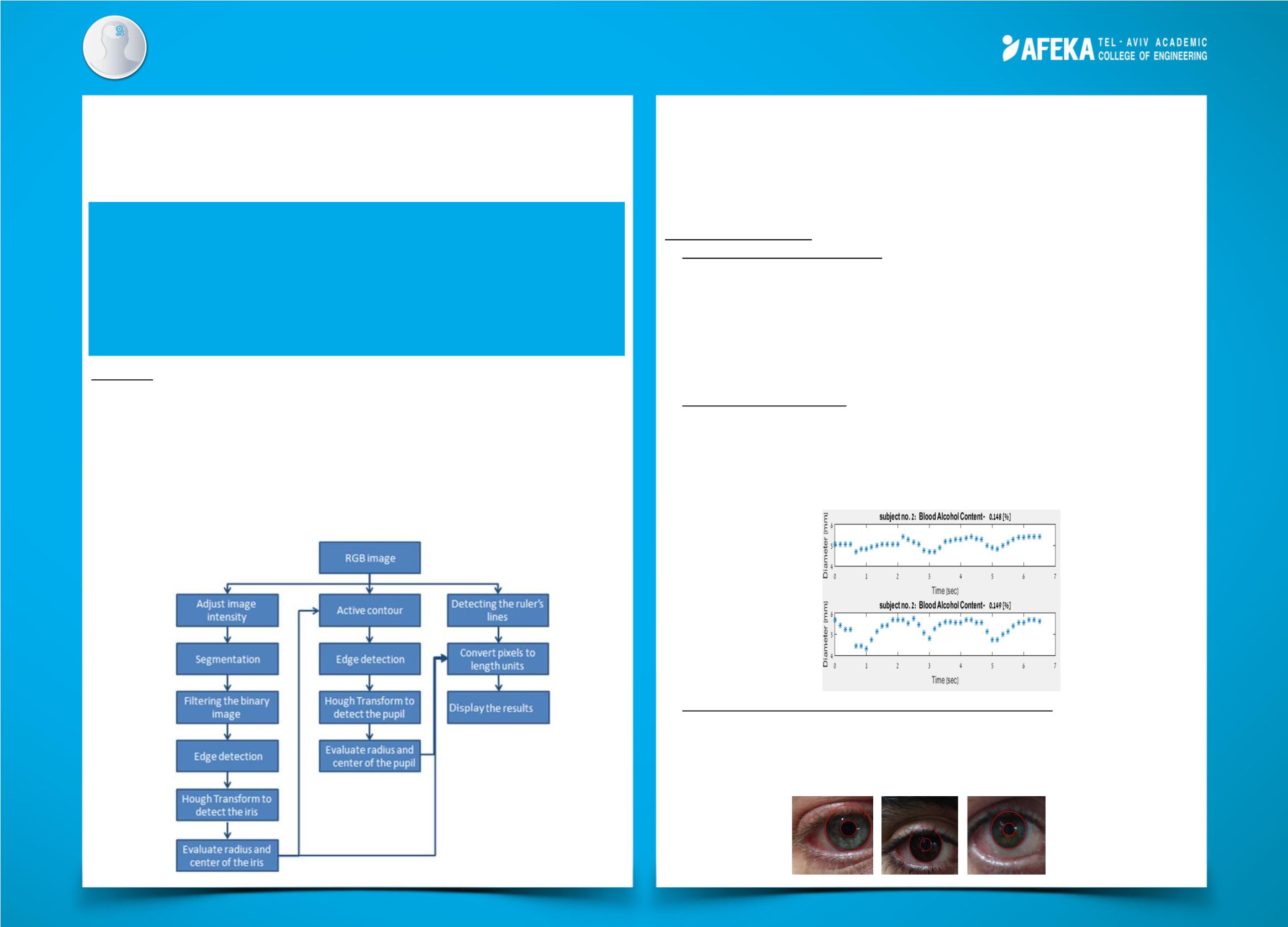

Evaluation of Blood Alcohol Level
Based on the Pupil
Methods:
The images as well as the videos were obtained from 20 healthy people before they
consumed any type of alcohol and two or three more times while they were
drinking. At the same time, a breathalyzer test was performed on them, to get
information about their blood alcohol level. After the data was collected, all the still
images and the videos were analyzed manually. In addition, an automatic algorithm
that identifies the pupil and the iris was developed. The input to the algorithm is a
still image and the output is the original image with iris and pupil detection.
Following is a block diagram of the algorithm:
Liz Cohen Vaknin
Advisor: Dr. Yair Zimmer
Medical Engineering
In the block diagram, the left column describes the first stage of the algorithm
(identifying the iris) and the middle column describes the second stage (identifying
the pupil). All the images contain a ruler at the bottom. By detecting the ruler's lines,
the algorithm can convert the dimensions of the iris and pupil from pixels to length
units (right column of the block diagram).
Results and discussion:
•
Still images - manual processing
It was found that there is no correlation between blood alcohol level and the pupil
diameter. For example, each subject reacted in a different way while the blood
alcohol concentration increased (from zero) in the second measurement; in 35% of
the cases the pupil constricted, in 55% of the cases the pupil dilated and in 10% of
the cases the pupil diameter did not change significantly. Furthermore, sometimes
different pupil diameters are observed at different measurements for the same
subject and blood alcohol level.
•
Video - manual processing
It was found that there is no correlation between blood alcohol level and
characteristics of the pupil's response to light stimulation. For example, at similar
alcohol concentrations the behavior of the pupil amplitude as a function of time
may look different (see the graph below) - different contraction and dilation
amplitudes, different response time of the pupil to light stimuli and different initial
diameter of the pupil.
•
Identification of the pupil and the iris - automatic algorithm
The algorithm successfully identifies the correct location in all the cases. The
average error of the automatic algorithm compared to the manual measurements is
8.49% for the diameter of the pupil and 3.75% for the diameter of the iris.
Examples of the algorithm detection results are shown below:
This project focuses on testing and confirming the existence
of positive correlation between blood alcohol level and pupil
diameter as well as between characteristics of the pupil's
response to light stimulation and concentration of alcohol.
In addition, an automatic algorithm which identifies the pupil
and the iris and extracts data about them was developed.
















